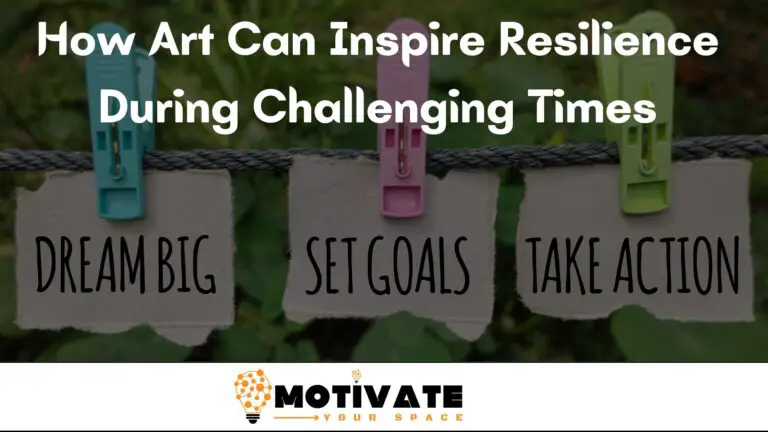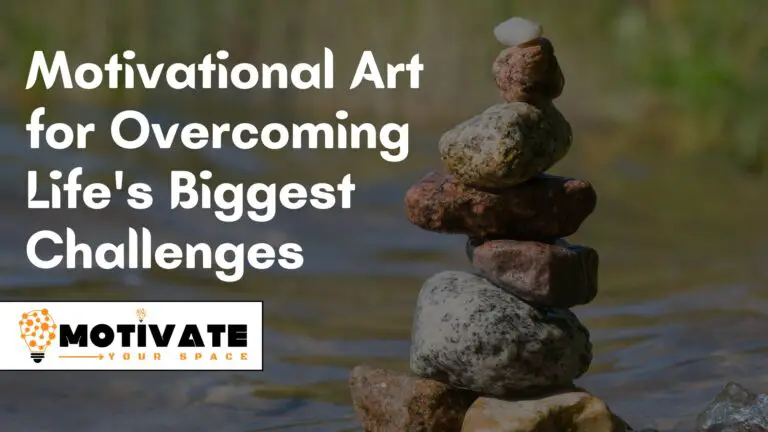Using Art to Build Emotional Resilience and Strength: Unleash Inner Power
Using art can help to build emotional resilience and strength by providing a creative outlet for expression. It fosters self-awareness and coping skills.
Art therapy has proven effective in enhancing emotional well-being. Engaging in creative activities like painting, drawing, or sculpting allows individuals to express emotions they might struggle to verbalize. This form of expression can help release stress and foster a sense of accomplishment.
Art helps people process complex feelings and build emotional resilience. By focusing on creative tasks, individuals develop problem-solving skills and gain emotional clarity. Creative activities also promote mindfulness, helping people stay grounded in the present moment. Through art, individuals can gain strength and resilience, better equipping them to face life’s challenges.
Read This Article: The Role of Art in shaping Leadership Mindsets
The Role of Art in Shaping Leadership Mindsets
The Role Of Art In Emotional Health
Art plays a significant role in enhancing emotional health. Creative activities like painting, drawing, and sculpting can help express feelings. Art offers a unique way to communicate emotions, especially when words fall short. By engaging in art, individuals can build emotional resilience and strength.

Art As Therapy
Art therapy involves using creative processes to improve emotional well-being. Therapists guide individuals in creating art to express their feelings. This helps in managing stress, anxiety, and depression. Art therapy can also improve self-esteem and social skills. Studies show that engaging in art reduces cortisol levels, which lowers stress. Making art provides a sense of accomplishment and joy.
Historical Perspectives
Art has been used for emotional healing since ancient times. Ancient Greeks used drama and theater to explore human emotions. Native American tribes created masks and totems for spiritual and emotional purposes. In the Renaissance, artists like Michelangelo used art to express profound human experiences. Throughout history, art has served as a tool for emotional expression and resilience.

Different Art Forms For Resilienc
Art can be a powerful tool to build emotional resilience. Engaging in various art forms helps manage stress and express emotions. Let’s explore different types of art that can strengthen emotional resilience.
Visual Arts
Visual arts include painting, drawing, and sculpture. These activities allow for self-expression and creativity. Creating visual art can help release emotions and reduce anxiety.
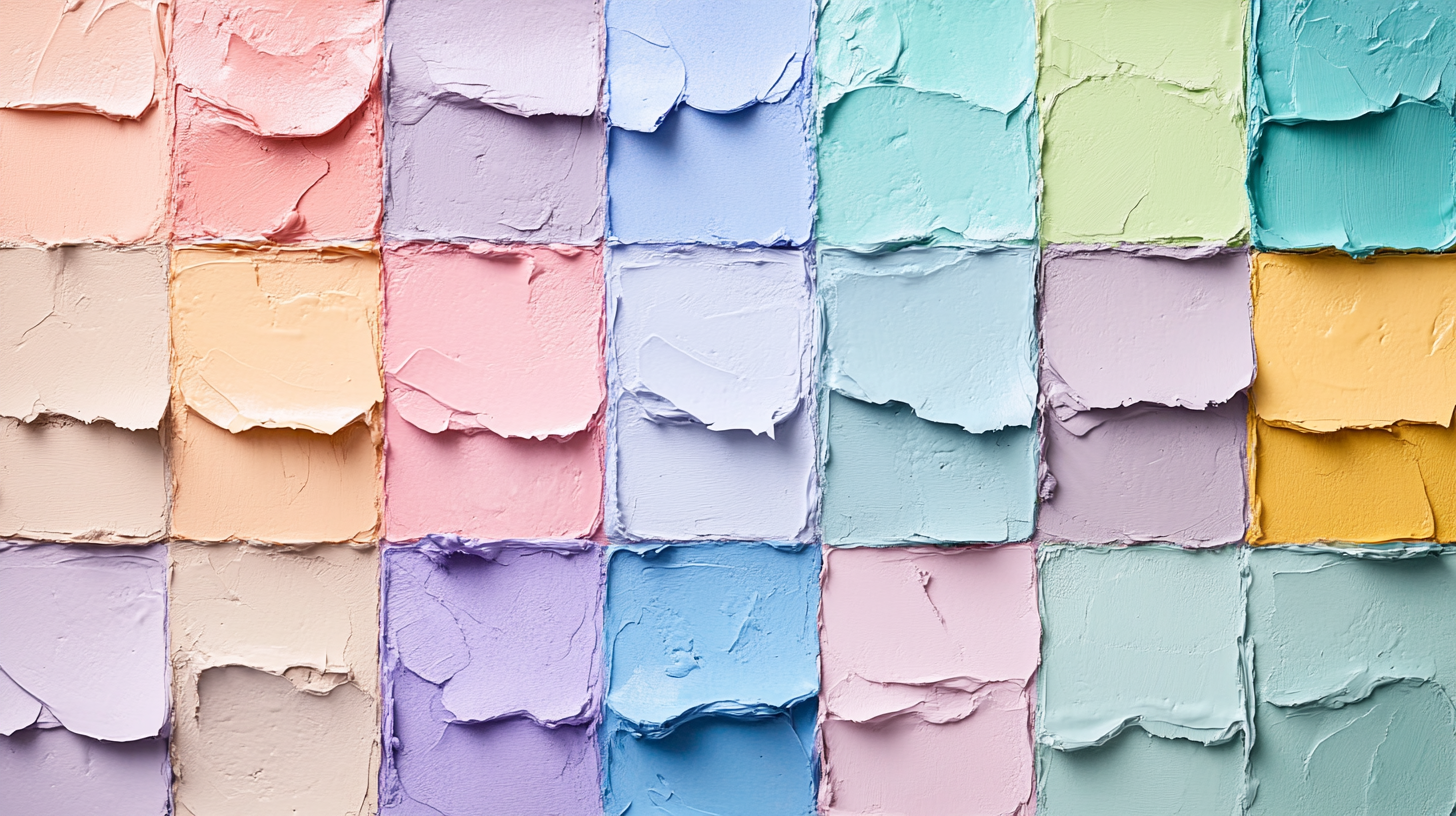
Painting with watercolors or oils can be soothing. Drawing with pencils or charcoal helps focus the mind. Sculpting with clay or other materials provides a tactile experience.
Here are some benefits of visual arts:
- Encourages creative thinking
- Improves focus and concentration
- Provides a sense of accomplishment
Performing Arts
Performing arts include activities like dance, theater, and music. These forms of art involve physical movement and emotional expression. They can boost confidence and provide a sense of community.
Dancing to music can lift your spirits. Acting in a play helps explore different emotions. Playing a musical instrument can be deeply satisfying.

Here are some benefits of performing arts:
- Enhances self-expression
- Builds teamwork skills
- Reduces stress through physical activity
Benefits Of Artistic Expression
Artistic expression offers numerous benefits for emotional resilience and strength. Engaging in creative activities helps individuals understand and manage their emotions better. Below are some key benefits of artistic expression.
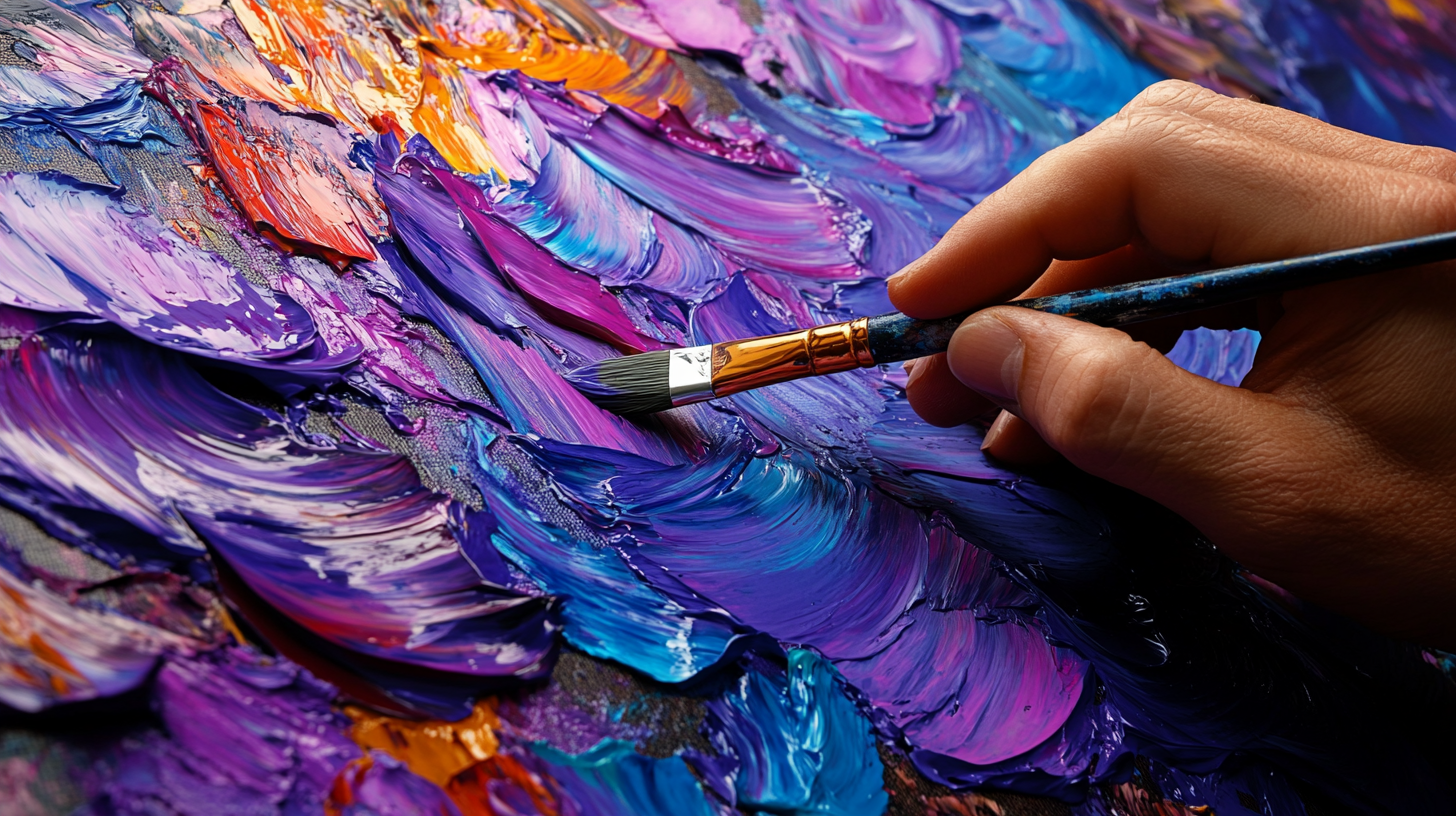
Stress Reduction
Creating art can significantly reduce stress levels. Engaging in drawing, painting, or sculpting helps distract from daily worries. It provides a mental break and promotes relaxation.
- Art activities release endorphins, the body’s natural stress relievers.
- Focusing on art helps calm the mind and reduces anxiety.
- Art provides a healthy outlet for expressing emotions.
Enhanced Self-awareness
Artistic expression enhances self-awareness and emotional intelligence. Creating art allows individuals to explore their inner thoughts and feelings. It helps them understand their emotional state better.
- Art can reveal hidden emotions and thoughts.
- It encourages introspection and personal growth.
- Art helps individuals connect with their deeper selves.
| Benefit | Description |
|---|---|
| Stress Reduction | Engaging in art activities helps reduce stress and promote relaxation. |
| Enhanced Self-Awareness | Art encourages introspection and helps individuals understand their emotions better. |
Techniques To Cultivate Inner Strength
Using art to build emotional resilience can be transformative. Simple techniques help nurture inner strength. These methods are accessible and effective for everyone.
Mindfulness And Art
Mindfulness is a powerful way to connect with your emotions. Combining mindfulness with art enhances this connection. Start by setting aside a quiet space. Choose your favorite art supplies. Focus on the present moment. Let your mind be free. Draw or paint what you feel. Do not judge your work. This process helps release stress and anxiety. It brings clarity and peace.
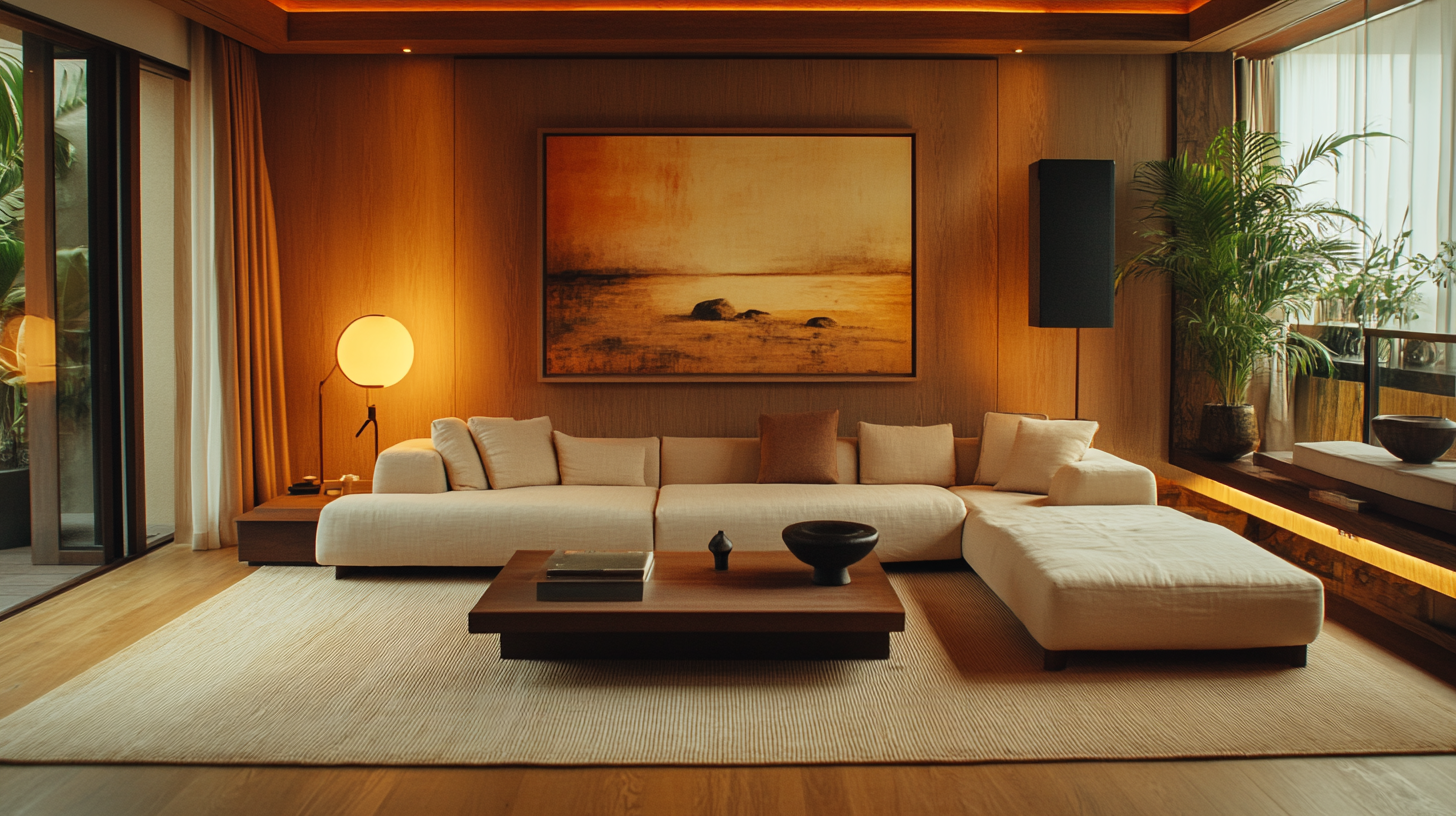
Here are some steps to practice mindfulness with art:
- Find a quiet and comfortable space.
- Gather your art materials.
- Close your eyes and take deep breaths.
- Open your eyes and start creating.
- Focus on the process, not the outcome.
Creative Journaling
Creative journaling is another effective technique. It allows you to express emotions in a safe space. Start with a blank journal. Use words, sketches, or colors to document your feelings. Reflect on your day or any challenging moments. This practice helps you understand and process emotions. It builds emotional resilience over time.

Here are some tips to get started with creative journaling:
- Choose a journal that inspires you.
- Set aside time each day to write or draw.
- Be honest with your feelings.
- Use colors and symbols to represent emotions.
- Review your entries regularly to see your progress.
By incorporating these techniques, you can cultivate inner strength. Mindfulness and creative journaling are simple yet powerful tools. They help you build emotional resilience and face challenges with confidence.
Art Activities For Emotional Resilience
Engaging in art activities can build emotional resilience. These activities offer a way to express emotions. They help in reducing stress and improving mental health. Below are some effective art activities for emotional resilience.
Painting And Drawing
Painting and drawing are excellent ways to explore emotions. They allow for creative expression without words. Here are some benefits:
- Stress Relief: Creating art reduces stress levels.
- Self-Expression: Art helps in expressing feelings.
- Focus: Painting improves concentration and focus.
Try setting up a simple art station at home. Use watercolors, crayons, or colored pencils. Draw or paint whatever comes to mind. Let your imagination flow freely.
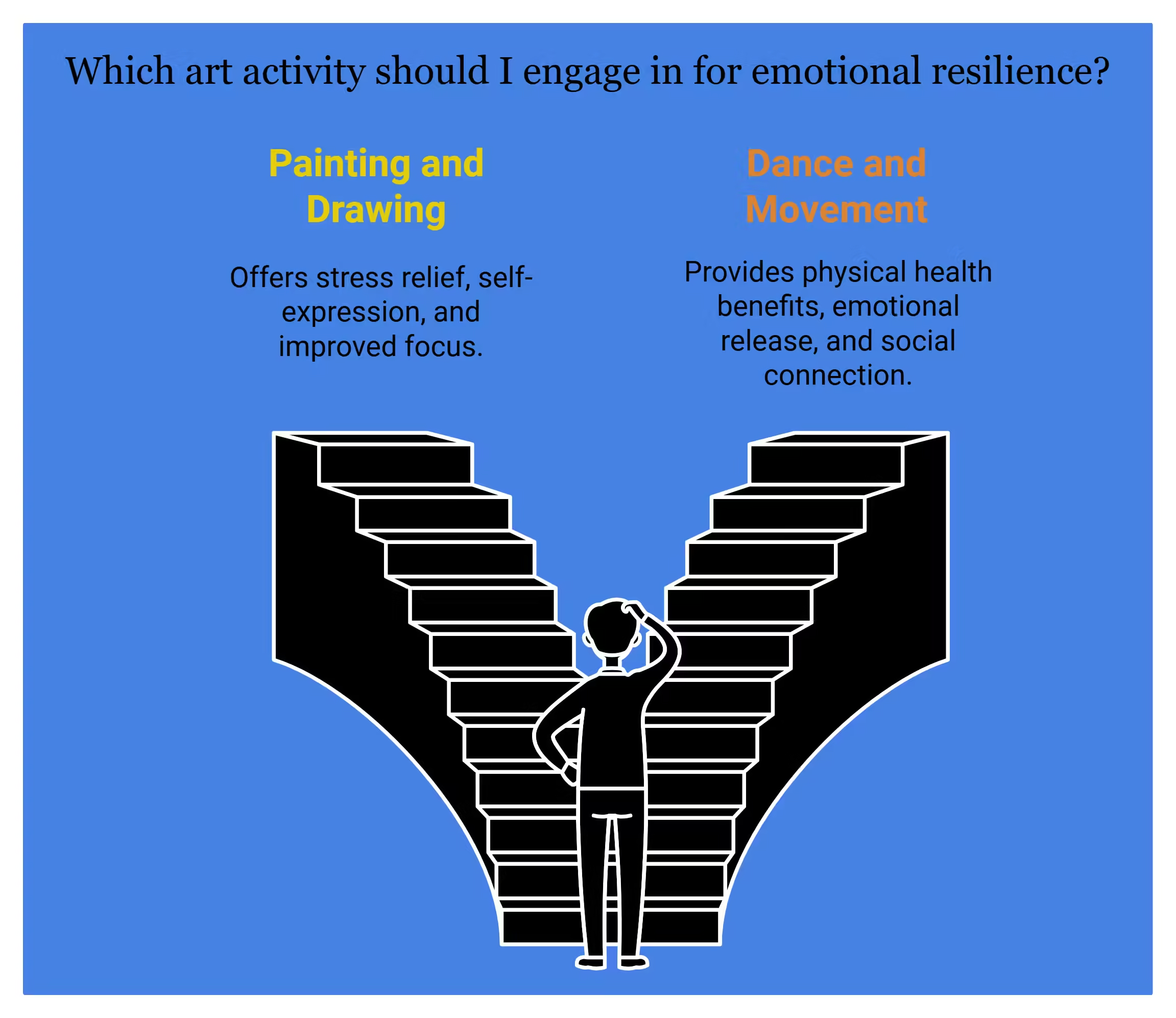
Dance And Movement
Dance and movement are powerful tools for emotional resilience. They help in releasing pent-up emotions and energy. Here are some benefits:
- Physical Health: Dance improves physical health and fitness.
- Emotional Release: Movement helps in releasing emotions.
- Social Connection: Dancing in groups builds social bonds.
Try different dance styles like hip-hop, ballet, or freestyle. Move to your favorite music. Focus on enjoying the movement and rhythm.
| Activity | Benefits |
|---|---|
| Painting | Stress Relief, Focus |
| Drawing | Self-Expression, Concentration |
| Dance | Physical Health, Emotional Release |
Case Studies And Success Stories
Using art to build emotional resilience and strength has proven successful. This section shares real-life examples of individuals and communities. They have found healing and growth through art.

Personal Experiences
Jane’s Journey: Jane struggled with anxiety for years. She discovered painting as an outlet. Through art, she expressed her feelings. This helped her manage stress and find peace.
Mark’s Story: Mark faced depression after losing his job. He joined an art therapy group. Drawing allowed him to process his emotions. He eventually regained his confidence and found new employment.
| Person | Challenge | Art Form | Outcome |
|---|---|---|---|
| Jane | Anxiety | Painting | Peace |
| Mark | Depression | Drawing | Confidence |
Community Programs
Art for All: This program provides free art classes. It aims to strengthen community bonds. Participants include children, adults, and seniors. They create art together and support each other.
Healing Hearts: This initiative focuses on trauma survivors. They use art to express their pain. Workshops include painting, music, and dance. Participants report feeling more connected and less isolated.
- Art for All: Free art classes for all ages.
- Healing Hearts: Art workshops for trauma survivors.
These success stories show the power of art. It builds emotional resilience and strength. Both individuals and communities benefit from creative expression.
Incorporating Art Into Daily Life
Incorporating art into daily life can help build emotional resilience and strength. Art provides a unique way to express feelings and cope with stress. It helps to see the world differently and find inner peace.
Simple Creative Practices
Engaging in simple creative practices can make a big difference. Drawing, painting, or doodling are easy ways to start. No need to be an expert. Just enjoy the process.
- Doodling: Draw shapes and patterns on paper.
- Painting: Use watercolors or acrylics to create art.
- Collage: Cut and paste pictures from magazines.
These activities can be done in short bursts. Even five minutes can be beneficial.
Setting Aside Time
Setting aside time for art is important. Make it a part of your routine. Consistency helps build emotional resilience.
Here are some tips to help you make time for art:
- Schedule It: Add art time to your daily calendar.
- Create a Space: Have a dedicated area for your art supplies.
- Set a Timer: Use a timer to keep track of your art sessions.
Having a regular art practice can be calming. It helps you manage stress better.
Art can be a powerful tool. It helps build emotional strength and resilience. Try to incorporate it into your daily routine.
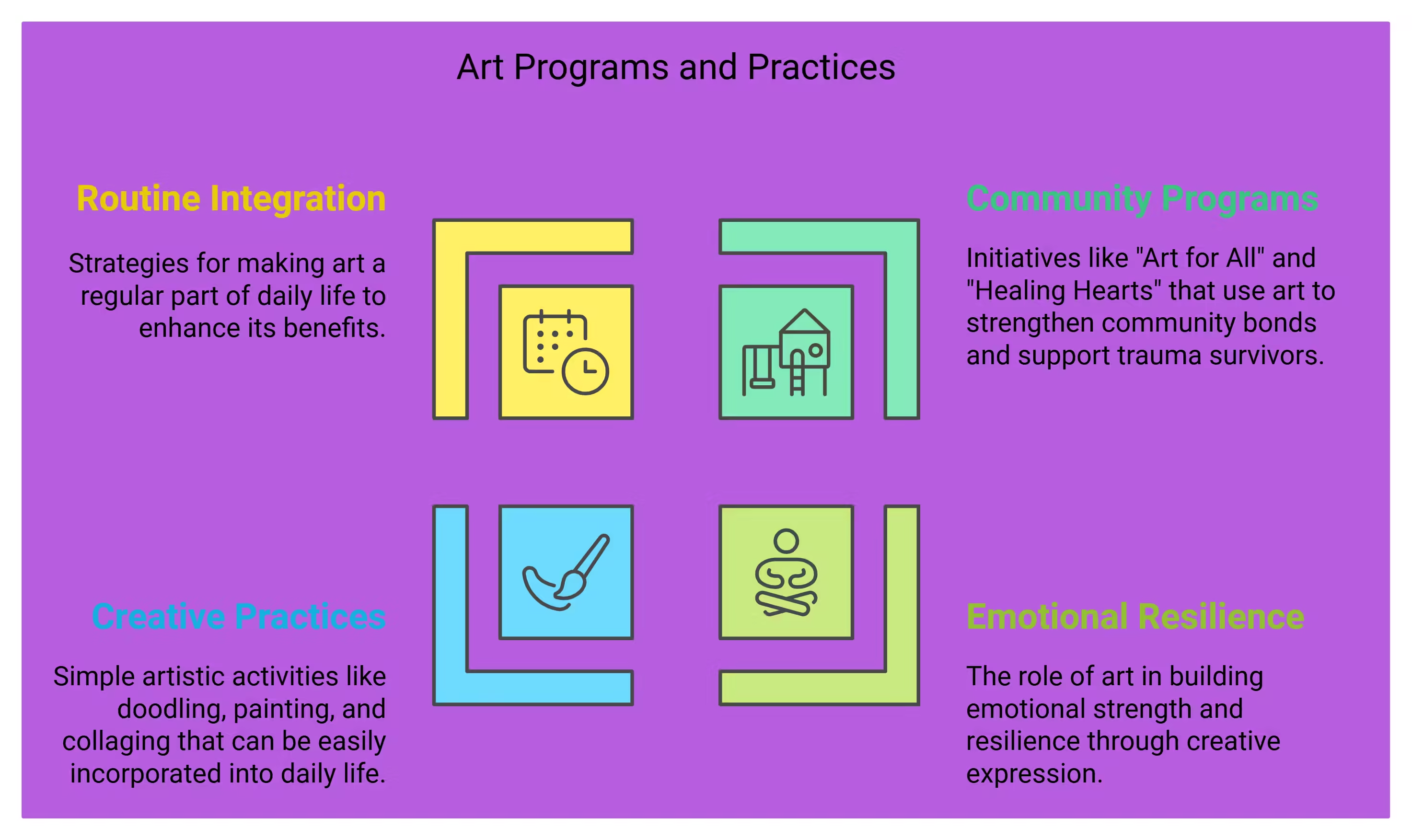
Resources And Tools
Building emotional resilience and strength through art is a powerful approach. There are various resources and tools to help you on this journey. From workshops to online platforms, these tools provide support and guidance.
Workshops And Classes
Attending art workshops and classes can be a great start. These sessions offer hands-on experience and expert guidance. You can explore different art forms like painting, sculpture, and digital art. Instructors often integrate therapeutic techniques to enhance emotional resilience.
Here are some popular options:
- Community centers often offer free or low-cost art classes.
- Local art studios provide specialized workshops.
- Universities and colleges sometimes offer non-credit courses.
Online Platforms
Online platforms make art accessible from the comfort of your home. You can find various resources to improve your skills and emotional well-being.
Check out these online resources:
- Skillshare: Offers a wide range of art courses.
- Udemy: Provides both free and paid art tutorials.
- YouTube: Features countless free art lessons and techniques.
These platforms often have community forums. This allows you to share your work and get feedback. Engaging with others can build your emotional strength.
Using these resources can help you grow emotionally. Embrace the power of art to enhance your resilience and well-being.
Frequently Asked Questions
How Does Art Help With Resilience?
Art boosts resilience by providing emotional expression and stress relief. It fosters creativity, self-awareness, and problem-solving skills. Engaging in art enhances mental well-being and helps cope with challenges.
What Are The 3 Ways To Build Emotional Resilience?
1. Practice mindfulness and meditation daily. 2. Build a strong support network of friends and family. 3. Engage in regular physical exercise.
How Do You Build Emotional Strength And Resilience?
Build emotional strength and resilience by practicing mindfulness, maintaining a support network, setting realistic goals, and embracing challenges. Prioritize self-care and positive thinking.
What Are The 3 P’s To Build Emotional Resilience?
The 3 P’s to build emotional resilience are Purpose, Perspective, and Persistence. Purpose gives life meaning. Perspective helps manage challenges. Persistence builds strength through adversity.
Conclusion
Art can be a powerful tool for building emotional resilience. It allows for self-expression and stress relief. Incorporating art into daily life can foster strength and emotional balance. Embrace creativity to enhance your well-being and mental health. Let art be your guide to a more resilient and strong self.


